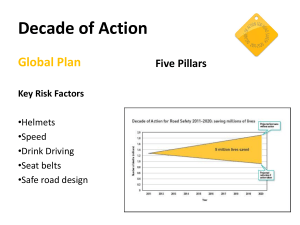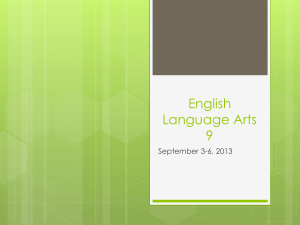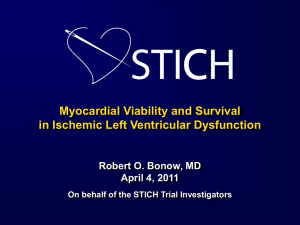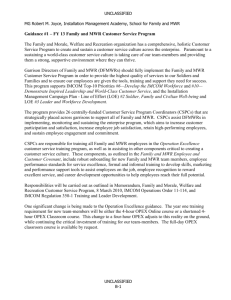Jacques Haworth
advertisement
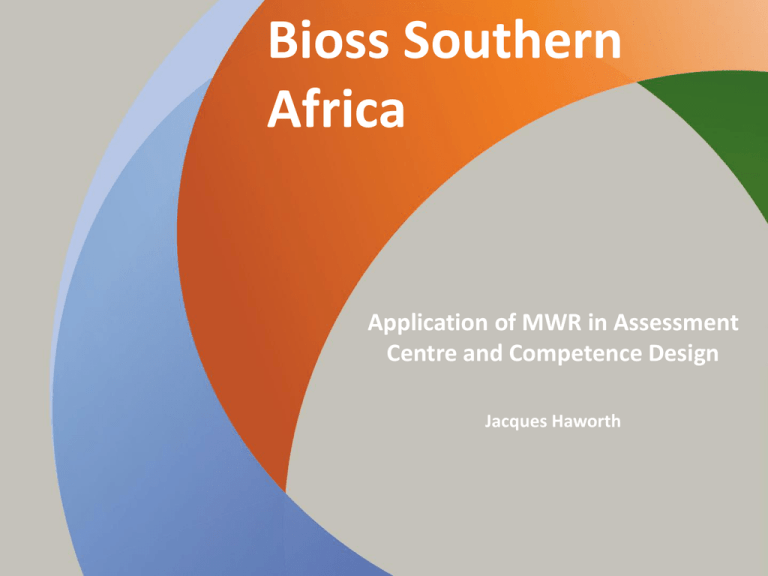
Bioss Southern Africa Application of MWR in Assessment Centre and Competence Design Jacques Haworth OVERVIEW • The context of work complexity • Applying work complexity to design • Aligning competencies to complexity DEFINITION OF WORK COMPLEXITY Elliott Jaques W =K +E ork nowledge xperience +D iscretion COMPLEXITY AND WORK JUDGMENT COMPLEXITY INCREASING TIME FRAME Uncertainty increases Diversity of stakeholders increases Time span of consequence increases Environment becomes more abstract Variables to juggle become more diverse Use of judgment and insight becomes more predominant than known data, detailed knowledge, skill, experience and prescription THE FOUR DOMAINS OF WORK ADDED VALUE FOR THE PRESENT Theme of Leadership: EXCELLENCE Focus: effectiveness, efficiency, profitability Meaning Domain ADDED VALUE FOR THE FUTURE Theme of Leadership: HOPE Focus: creating long-term viability and sustainability for the organisation VALUE SYSTEMS Theme of Leadership: TOLERANCE Focus: creating and sustaining a shared future For people with diverse value systems Adapted from L. Hoebeke COMPLEXITY INCREASES THE FOUR DOMAINS AND THEMES OF WORK ADDING VALUE FOR THE PRESENT (Service delivery) OPERATIONAL Quality (I) Core foundation – look after the present, e.g. managing, making, coordinating. Service (II) Practice (III) ORGANISATIONAL ADDED VALUE FOR THE FUTURE VALUE SYSTEMS (Added value for humanity) Ensure longer-term viability & profitability, e.g. research, marketing, development. GLOBAL Shaping and molding the overall business environment and future for further generations, e.g. politically, multi-nationally. Strategic Development (IV) Strategic Intent (V) Corporate Citizenship (VI) Corporate Prescience (VII) Adapted from L. Hoebeke - copyright BIOSS SA - REF: FOUR DOMAINS OF WORK (DM) 1999 QUALITY I E X T E N S I O N OF C O N T E X T II Quality in judgement used to make something essential to viability of organisation Quality as technical specification and attitude III IV Quality in system and practice and as commitment A MATRIX OF WORK SERVICE Service to: Customers/clients/ situations; work of first level; purpose of organisation Service to particular situations seen as technique & as attitude PRACTICE Current practices to provide services/ make products DEVELOPMENT V Quality as change and development Quality as profit, reputation and culture Impact of change on delivery of service in particular situations Promoting the contribution of service to each particular & its contribution to the whole Development of new products/ services/practices as process & as atmosphere Interaction between the mission, the current means and 3 to 5 year change projects MISSION Financial implications of practices to provide services/ make products THEMES Development of profit / reputation / long-term viability as projects and climate Strategic intent of institution; external and internal wellbeing of organisation itself DESIGN CONSIDERATIONS • Background information • Written exercises • Interactive exercises BACKGROUND INFORMATION • Complexity of context: MWR Work theme Audit (work sample) • Appropriate Complexity of role: Position in structure Discretion Nature of Tasks Stakeholders Variables Time Span SERVICE VS PRACTICE ROLE Service Practice Stakeholders Internal/External customer, limited groups Vendors, multi-function interface, larger numbers and greater variability Discretion Process, situational outcomes Practice, systemic outcomes Time Span Up to 1 year 1-2 years Variables Defined relative to specific situation Principles underlying approach to multiple situations Structure Manage others Manage Managers * SIMULATION DESIGN • • • • • Problems to be solved Appropriate level of complexity Nature of information provided Stakeholder context Outcomes COMPETENCIES • • • “Levelling” of competencies Relationship between competencies and complexity Incremental competency COMPETENCIES AT DIFFERENT THEMES OF WORK Problem Solving Theme 2: Identifies common elements in practical situations and actions e.g. projects; processes, analyses and integrates them into a relevant, factual outcome, recognising cause and effect. Judges and decides on appropriate actions to resolve concrete and practical problems (including aspects such as people, systems, technology and resources). Problem Solving Theme 3 Identifies and breaks problems into constituent parts. Consults widely, probes facts, analyses issues from different perspectives. Evaluates information to differentiate between essential and non-essential. Makes accurate use of logic, identifying connections and links between information. Uses appropriate data including trend data to analyse and understand issues. Draws sound inferences and judgements from various alternatives. Takes calculated risks on the basis of adequate information and analysis QUESTIONS? The work of bioss is capacity building. The essence of bioss is appreciation - of individuals, of the way they work together, of organizations and of they way they position themselves in their environment. The word ‘Appreciation’ is used because with its connotations of mutual respect, it conveys both value (in philosophical and economic terms) & growth (as in the appreciation of capital - financial & social). Gillian Stamp, 2006 Contact BIOSS on +27 11 4502434 for information regarding application, training or research and development of this and related models and concepts or visit our website www.bioss.co.za






